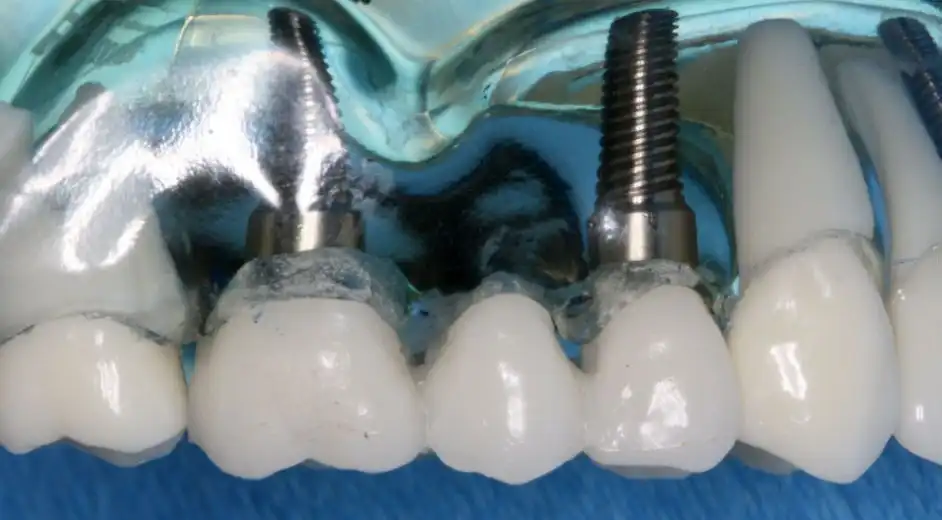The percentage of dental implant failures is approximately 1-2%, which means that the success rate compared to other surgeries is quite high.
However, no surgery is completely risk-free and with the expert help of dentist Dr. Andreas Jahnigen we have gathered the most commom dangers of undergoing dental implant surgery.
What kinds of problems typically occur?
A common thing that can happen is that the implant can be placed too close to the gum margin. In this case the oral bacteria can get too close to the implant margin creating the first stage of what we call “Peri-mucositis” (inflammation around the gingival margin of the implant).
This can cause continuous bleeding of the gums around the implant. Whenever the gums bleed continuously around an implant, this means that something is wrong and needs to be addressed immediately by the dentist. If untreated, this can lead to the 2nd stage called ‘peri-implantitis’.
This is a dangerous disease around the implant. It means that the bone is being eaten away beneath the gum. You are no longer dealing with just the top part of the implant; you are now presented with problems down, inside the bone. This is a huge problem and has to be treated by an experienced implantologist. When this occurs, this is what we would refer to as a ‘Failure’.

Have you heard of titanium dental implants being particularly dangerous?
There has been no significant data relating to titanium as being dangerous. There are studies that indicate that bacteria has a tendency to build up in larger areas around the entire surface of the titanium abutment in contrast to zirconia abutments where the bacteria tends to only build up in small clusters.
Ten years ago, most of the implants were restored with titanium abutments that characteristically created a greyish colour around the tissue of the gum line. Today, the use of CAD/CAM white zircon abutments have begun to dominate the aesthetic market. It is now possible to mimic the original root form.
We refer to this as full anatomical abutments. They naturally support the gingival margins and because of the smooth surface, bacteria colonization is minimized compared to metal abutments where the bacteria is more uniform.
Studies now show that there is an advantage to using zirconia abutments with veneered fluorescent abutments. These are known to reflect light by illuminating the brightness of the marginal tissue creating a top aesthetic result while greatly reducing the amount of bacteria around the abutment.

What is the state of the art technology use for dental implants today?
State of the art implant placement in our days, involves a great deal of preplanning. The preplanning process usually involves the dental technician to pre-plan the correct positioning of the implant in all 3-dimensions with use of a ‘virtual’ CT Scan.
Each part of the dental team, (the dental technician, the implantologist and the prosthodondist), is getting more specialized in the process of making dental implant restorations. The impact of the dental technician and the prosthodondist are beginning to play a more significant role in the planning stages of dental implants. This is referred to as ‘backward planning’.
State of the Art Implant companies include: Dentsply, NobelBiocare and Straumann implant systems. These are the systems that I typically use. Of course this can vary depending on the needs of each patient as well as their budget. The typical integration time of an implant is between 4-6 months.






 12
12
 5
5
 5
5




